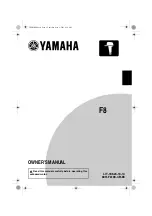
3-3
Chapter 3: Troubleshooting
users, so it is best to fi rst check with your distributor or reseller for troubleshooting
services. They should know of any possible problem(s) with the specifi c system
confi guration that was sold to you.
Please go through the ‘Troubleshooting Procedures’ and 'Frequently Asked
1.
Question' (FAQ) sections in this chapter or see the FAQs on our Web site
(
http://www.supermicro.com/support/faqs/
) before contacting Technical Sup-
port.
BIOS upgrades can be downloaded from our web site at
2.
(http://www.
supermicro.com/support/bios/
).
If you still cannot resolve the problem, include the following information when
3.
contacting Supermicro for technical support:
Motherboard model and PCB revision number
•
BIOS release date/version (this can be seen on the initial display when your
•
system fi rst boots up)
System confi guration
•
An example of a Technical Support form is on our web site at
•
(http://www.
supermicro.com/support/contact.cfm).
Distributors: For immediate assistance, please have your account number ready
•
when placing a call to our technical support department. We can be reached by
e-mail at [email protected] or by fax at: (408) 503-8000, option 2.
3-3 Frequently Asked Questions
Question: What are the various types of memory that my motherboard can
support?
Answer:
The X8DTU/X8DTU-F has 12 240-pin DIMM slots that support DDR3
Registered ECC or Unbuffered ECC/Non-ECC 1333 MHz/1066 MHz/800 MHz
SDRAM modules. It is strongly recommended that you do not mix memory modules
of different speeds and sizes. Refer to Section 2-4 in Chapter 2 for details.
Question: How do I update my BIOS?
Answer:
It is recommended that you
do not
upgrade your BIOS if you are not
experiencing any problems with your system. Updated BIOS fi les are located on
our web site at
http://www.supermicro.com/support/bios/
. Please check our BIOS
warning message and the information on how to update your BIOS on our Web
















































